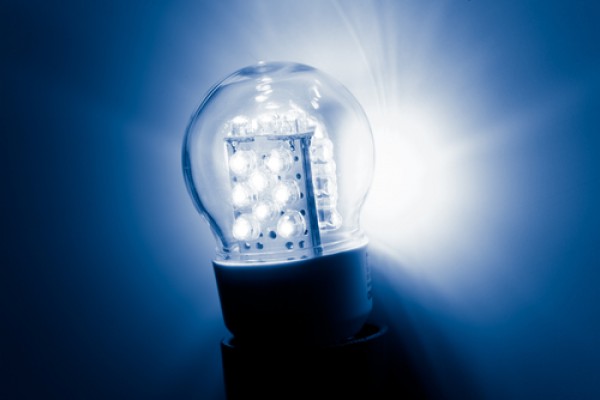
LEDs are extremely efficient, and when it comes to single colors such as red or green commonly used in traffic lights or toys, they can’t be beat. But those aren’t the colors we want to light up our homes and offices. Our eyes prefer the warm, white light produced by the sun, and when it’s not available, we’ll take the similar glow produced by CFLs and incandescent bulbs.
Soon, however, those traditional options won’t be available, and good riddance. They suck up way more energy than should be necessary to light a room. Scientists have been working hard to create an LED that emits the white light we crave, and a few think that lab-grown nanocrystals could unlock the answer.
Most LEDs work by passing electrons through a semiconductor material, in combination phosphors that glow when excited by radiation from the LED.
"But it’s hard to get one phosphor that makes the broad range of colors needed to replicate the sun," said John Budai, a scientist in ORNL’s Materials Science and Technology division, in a press release. "One approach to generating warm-white light is to hit a mixture of phosphors with ultraviolet radiation from an LED to stimulate many colors needed for white light."
Together with a team of scientists from University of Georgia and Oak Ridge and Argonne national laboratories, Budai is working to understand a new group of crystals that might yield the right blend of colors for white LEDs as well as other uses.
The knowledge gained through their atomic-scale analysis is helping the research team improve the phosphorescent crystals. Different factors in the growth process—temperature, powder composition, and types of gas used—can change the final product. A fundamental understanding of all the parameters could help the team to perfect the recipe and improve the crystals’ ability to convert energy into light.
If successful in the research, Budai’s work with the new nanocrystals may have other practical uses beyond phosphors for LEDs. Their ability to act as miniature "light pipes" when the crystal quality is high enough could lend them to applications in fiber-optic technologies, Budai said.












